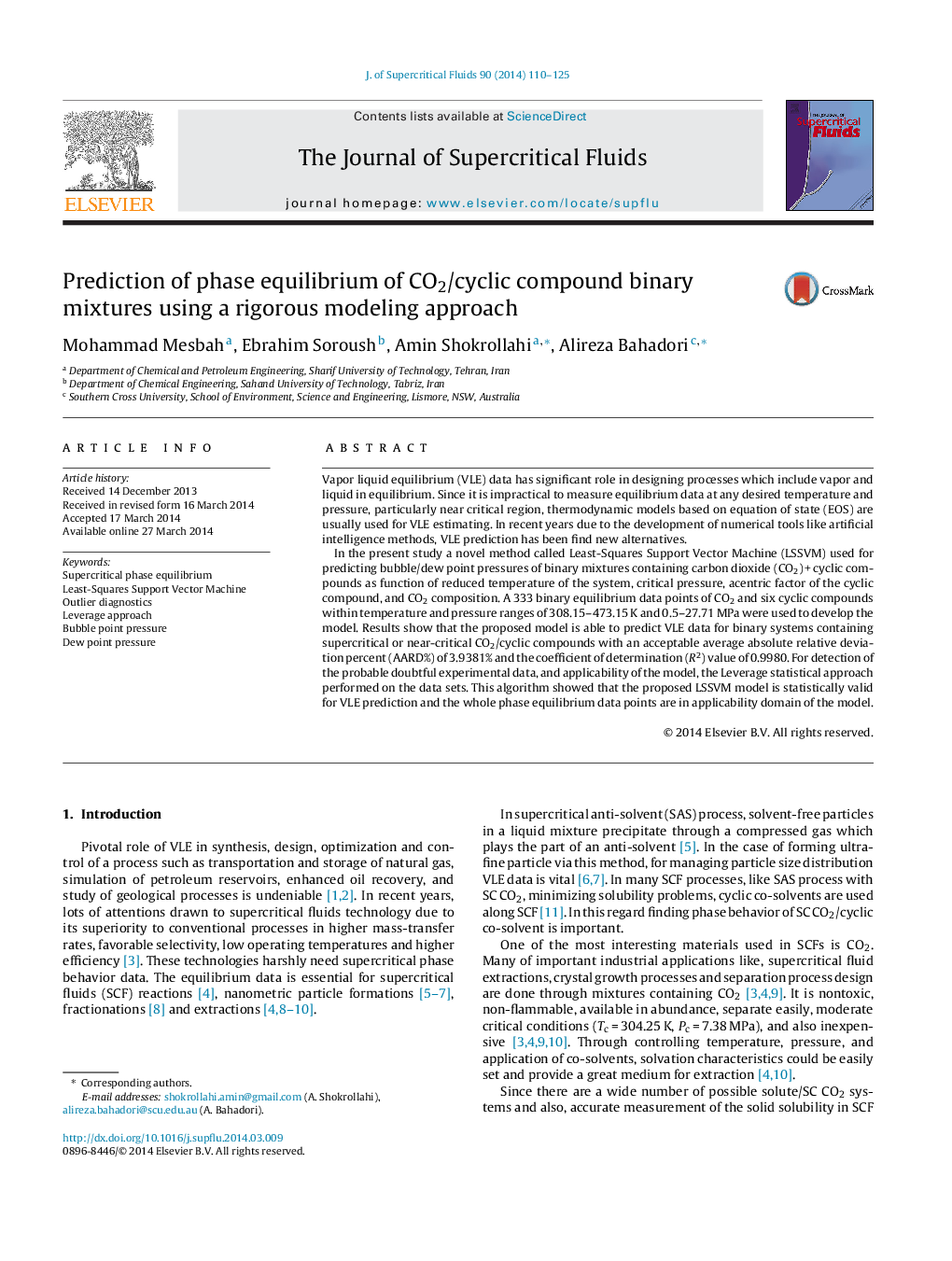| Article ID | Journal | Published Year | Pages | File Type |
|---|---|---|---|---|
| 230516 | The Journal of Supercritical Fluids | 2014 | 16 Pages |
•LSSVM is used for predicting bubble- and dew-point pressures of binary mixtures containing CO2 + cyclic compounds.•The model has been developed and tested using 333 series of the data.•The results of model show excellent agreement with data.•Leverage statistical approach performed for detection of the probable doubtful data, and applicability of the model.
Vapor liquid equilibrium (VLE) data has significant role in designing processes which include vapor and liquid in equilibrium. Since it is impractical to measure equilibrium data at any desired temperature and pressure, particularly near critical region, thermodynamic models based on equation of state (EOS) are usually used for VLE estimating. In recent years due to the development of numerical tools like artificial intelligence methods, VLE prediction has been find new alternatives.In the present study a novel method called Least-Squares Support Vector Machine (LSSVM) used for predicting bubble/dew point pressures of binary mixtures containing carbon dioxide (CO2) + cyclic compounds as function of reduced temperature of the system, critical pressure, acentric factor of the cyclic compound, and CO2 composition. A 333 binary equilibrium data points of CO2 and six cyclic compounds within temperature and pressure ranges of 308.15–473.15 K and 0.5–27.71 MPa were used to develop the model. Results show that the proposed model is able to predict VLE data for binary systems containing supercritical or near-critical CO2/cyclic compounds with an acceptable average absolute relative deviation percent (AARD%) of 3.9381% and the coefficient of determination (R2) value of 0.9980. For detection of the probable doubtful experimental data, and applicability of the model, the Leverage statistical approach performed on the data sets. This algorithm showed that the proposed LSSVM model is statistically valid for VLE prediction and the whole phase equilibrium data points are in applicability domain of the model.
Graphical abstractFigure optionsDownload full-size imageDownload as PowerPoint slide
